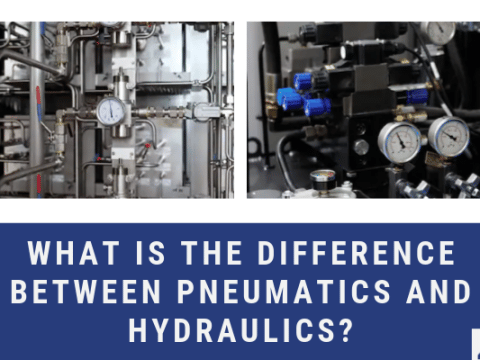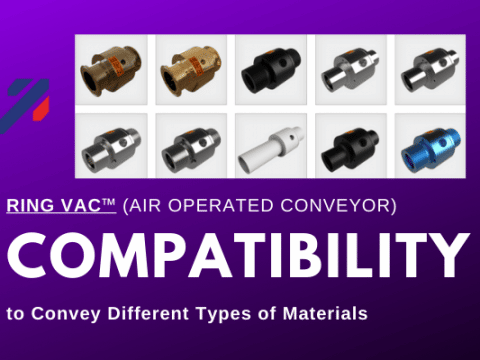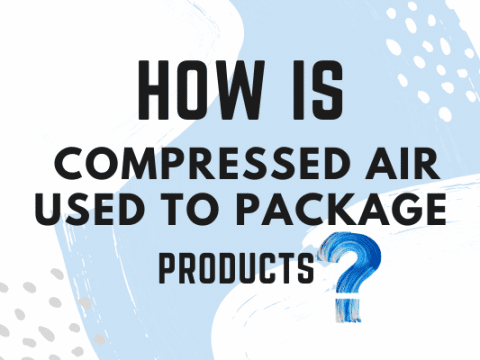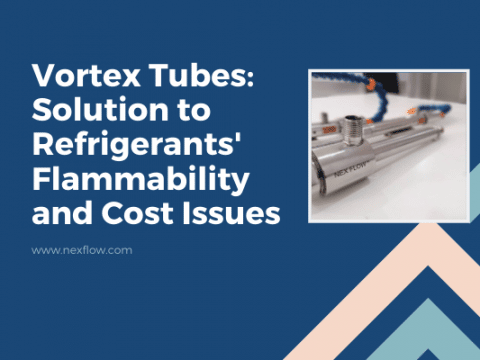
Vortex tubes are devices that take compressed air and spins it inside the unit creating a spinning air flow in one direction and spins the air flow back in the opposite direction within the first spinning air flow. Part of the air flow is out one end and gets hot, and the internal spinning flow that is let out the opposite end gets cold. It basically acts like tube in tube heat exchanger.
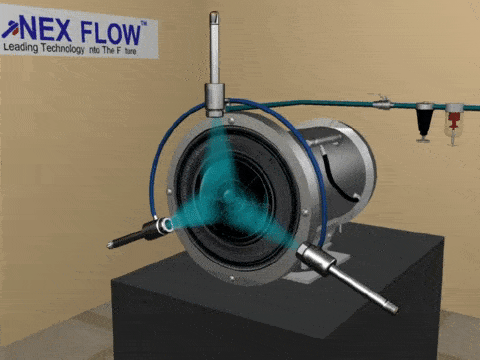
Air input the vortex tube is normally 80 to 100 PSIG (5.5 to 6.2 bar). The air exiting at each end of the vortex tube goes back to atmospheric or at least to a much lower pressure. In considering what you can or cannot attach to vortex tube, you must first consider these realities:
- You need a pressure difference between the inlet air to the unit, and the exit points. If there is no significant difference then the system will not work.
- The percentage of the air out the cold end is called the cold fraction. For example, if 80% of the inlet air exits the cold side the cold fraction is 80% and the hot fraction (air out the hot side) is 100-80 = 20%. If you add anything to the cold end, there will be a back pressure. This will affect the cold fraction by pushing more air out the hot side thereby reducing the cold fraction. So there is a practical limit of how much back pressure can be tolerated by attaching anything to the cold end. The ultimate limit is a back pressure that pushes all, or almost all the air out the hot end negating any effectiveness for cooling.
- Similarly if you attach something to the hot end there will be back pressure pushing more air out the cold end. The limit would be if all the air is pushed out the cold end – it negates most or all of the cooling effect.
- Because compressed air exit at both ends, and at a pressure close to atmospheric pressure, a vortex tube is intrinsically safe from over pressurizing, the ultimate supply pressure limited to material integrity (in the case of Nex FlowTM made products, to 250 PSIG).
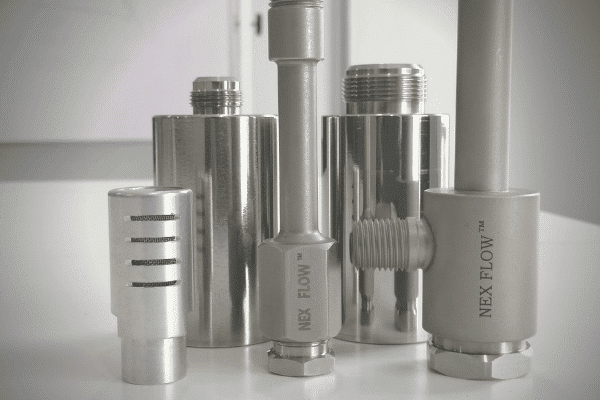
So when attaching any other accessory to the vortex tube the concepts above need to be considered. Rarely is any attachment made to the hot air exhaust end except for muffling accessories with minimal back pressure. Even in pre-packaged vortex tubes such as Tool Coolers or Panel Coolers, back pressure is very minimal and typically balanced at the cold end with other attachments such as hose hits or air distribution hose with similar back pressure effects, essentially balancing the system. However, if you examine more closely the cold end attachments, which tend to vary the most, there is a limit there as well. When attaching a hose kit such as locline or similar type of hose, the longer the length the more the back pressure. Locline hose is used extensively with Tool Coolers. The general rule is to limit the locline to 12” and under and to make sure the opening nozzle has at least a 1/8” opening. This keeps the back pressure low. Also, the longer you make this attachment, the air will tend to warm up more because of the conduction of atmospheric temperature through the plastic hose to the inside. So practically, the longer the hose, the higher the temperature (less cold air) exiting. In the case of a control Panel Cooler, there is a hose distribution kit supplied which is basically a long PVC hose with a muffler to attach to the end. Instructions stipulate to create inside this long hose to have at minimum of four (4) holes of 1/8” diameter drilled into the hose to let the air out and blow the cold air from the vortex tube onto the hot parts inside the cabinet. This accelerates the cooling of the inside of a control panel. Again, the minimum number of holes is required to minimize the back pressure (and also to help iso-thermalize the control panel faster). If the holes are not drilled, the cold air will exit only at the exit of hose end and with the added back pressure will restrict the flow, hence negatively affect the overall cooling rate (slows the process of equalizing the cabinet temperature). The hose addition onto a Panel Cooler also acts as a backup in case of a very remote possibility of any moisture getting into the panel in the very rare case that the filter on the inlet air fails. There are instances where a vortex tube has a hose attached to the cold end to deliver cold air at a long distance for other applications. It is important to simply use a larger inside diameter hose, the longer the length to minimize back pressure and if possible insulate the hose from conducting heat into the hose, warming up the cold air travelling inside. Care should be taken that the cold end hose is not fully plugged because while the back pressure will force air back out the hot side, any weakness in the hose may also cause it to split and may be dangerous as a result.
The question frequently arise is if it is possible to attach a vortex tube cold air output to the inlet to a blow-off accessory like air knife or an air amplifier (or any other air amplifying or conveying device). The answer is – it cannot be done simply because of the back pressure requirement of the vortex tube (#3 above). Any air amplifying device requires the air inlet to have high pressure. For a vortex tube to work, the air exit pressure from the vortex tube must be low. So attaching a vortex tube to the air amplifying product will just not work.
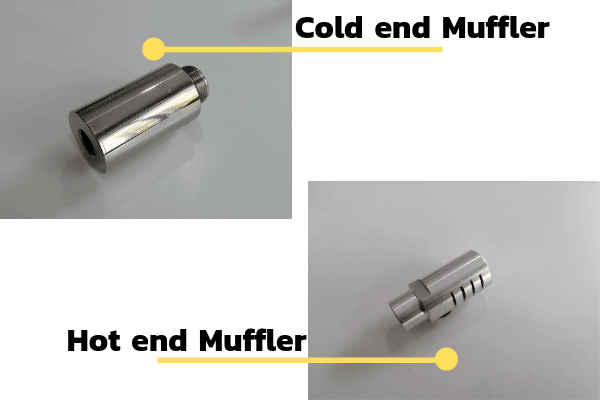
But…. the possibility of an alternative approach does come up. There have been a few attempted applications, where the air exiting the cold end of a vortex tube is placed near the air entraining end of an air amplifier such as an air jet or small air amplifier like an FX10, or FX20 or even an FX40. Successful results are rare however, and not confirmed, due to how air amplification technology works. The air drawn in by an air amplifier is depends on the amplifier size. For example, an FX10 will amplify air flow about 6.5 times and consumes 4.9 SCFM at 80 PSG. That means it will draw in a volume of 27 SCFM. (6.5-1 = 5.5 multiplied by 4.9). So if you place a vortex tube cold end “close” to the air entraining end the amplified air can be cooled. Even then, much of that cold air will already be mixed with warmer atmospheric air reducing the cold temperature. And, at the outlet of the amplifier about another 3 times the air is entrained from the warmer atmosphere. Assuming basic adiabatic mixing the cooling effect of the vortex tube supplied air will be greatly reduced. With a larger amplifier, the overwhelming effect of the high volume of entraining atmospheric air overwhelms cooling effect of the small volume of cold air from the vortex tube. This is why mixing the two technologies rarely works.
Air amplifiers and even air knives themselves do cool however, and are used extensively (especially air amplifiers) to cool very hot materials such as castings using the wind chill effect. It’s like driving with the window down in your car while driving on a hot day. The high velocity of the amplified air will accelerate the cooling of the hot surface because the high flow and high velocity of the amplified air cuts through the heat boundary layer on the part to remove the heat fast. One example was from an application in Mexico where small, hot aluminum parts which normally cooled in 30 minutes from sitting on a table were cooled in under a minute using a flow amplifier alone.
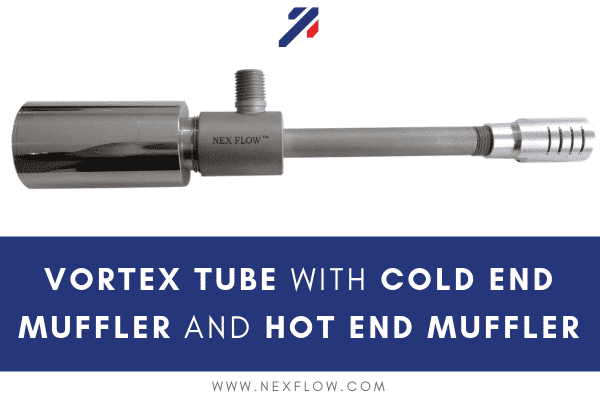
Vortex tubes are designed to cool enclosures or for spot cooling and not for cooling large areas. In those applications you are best off using air amplifiers. Therefore, combining vortex tubes with air amplifiers however is not a proven method. When using vortex tubes – it is important to understand the above 4 facts governing the operation of the technology.



